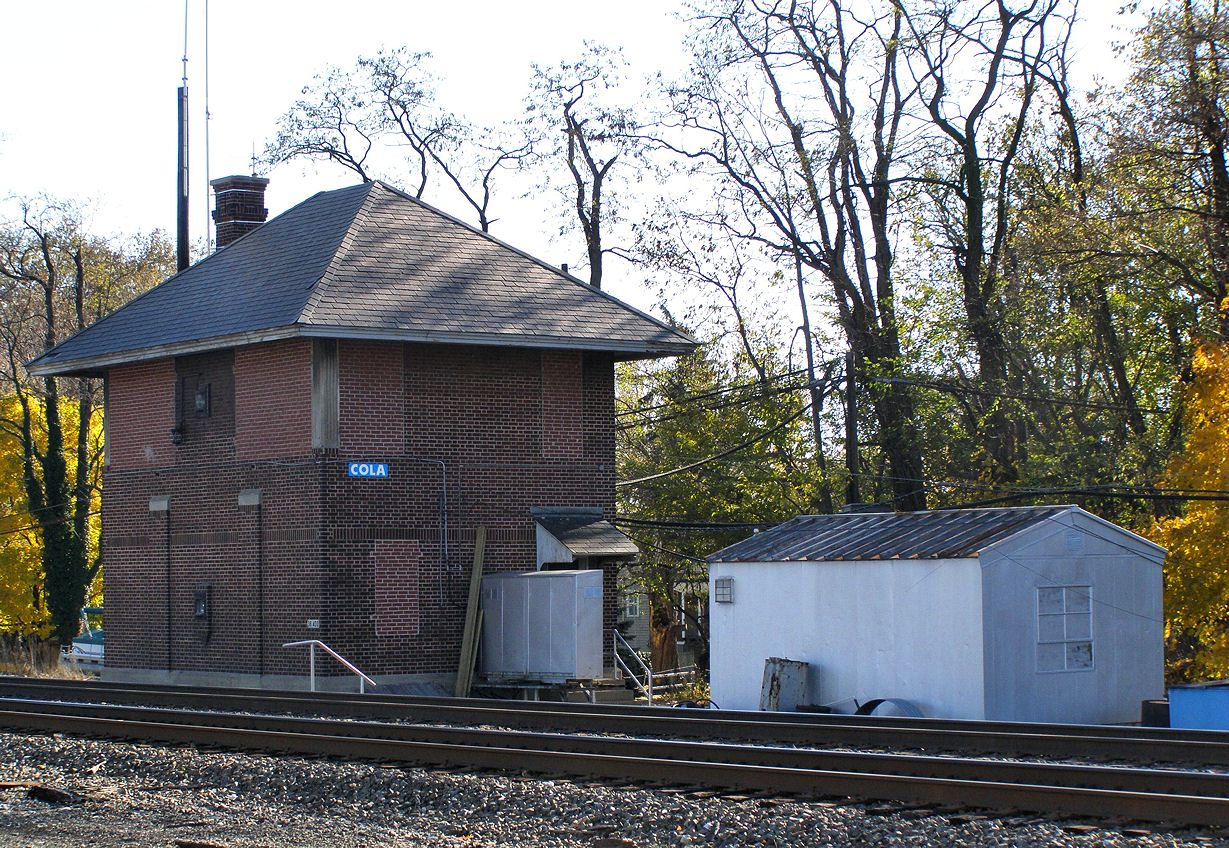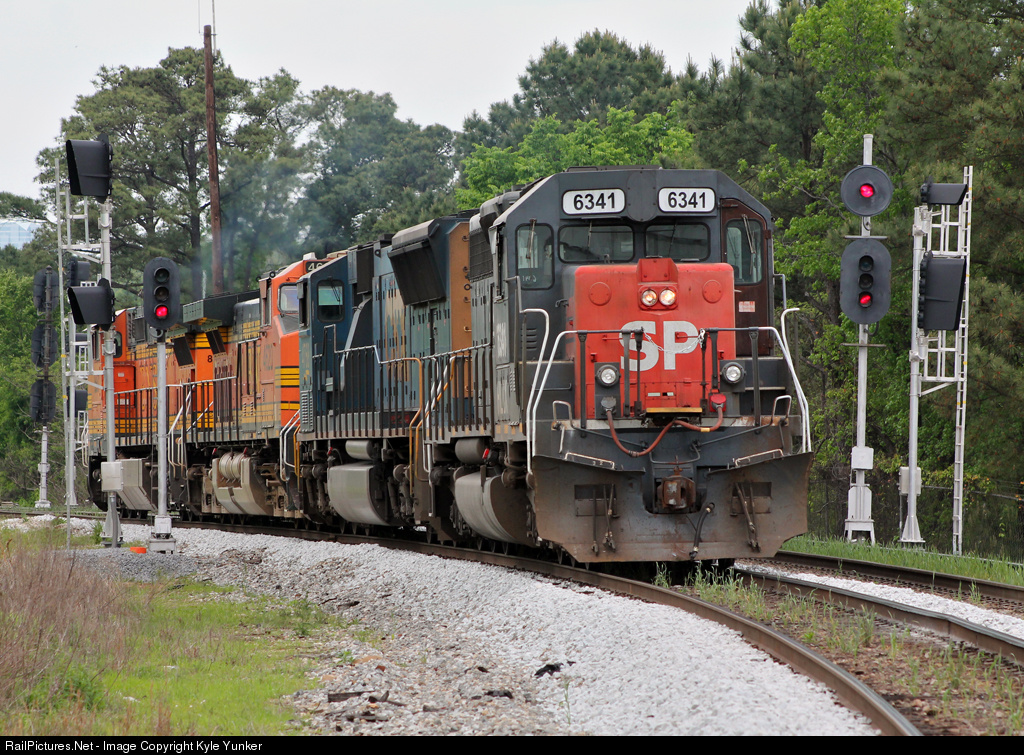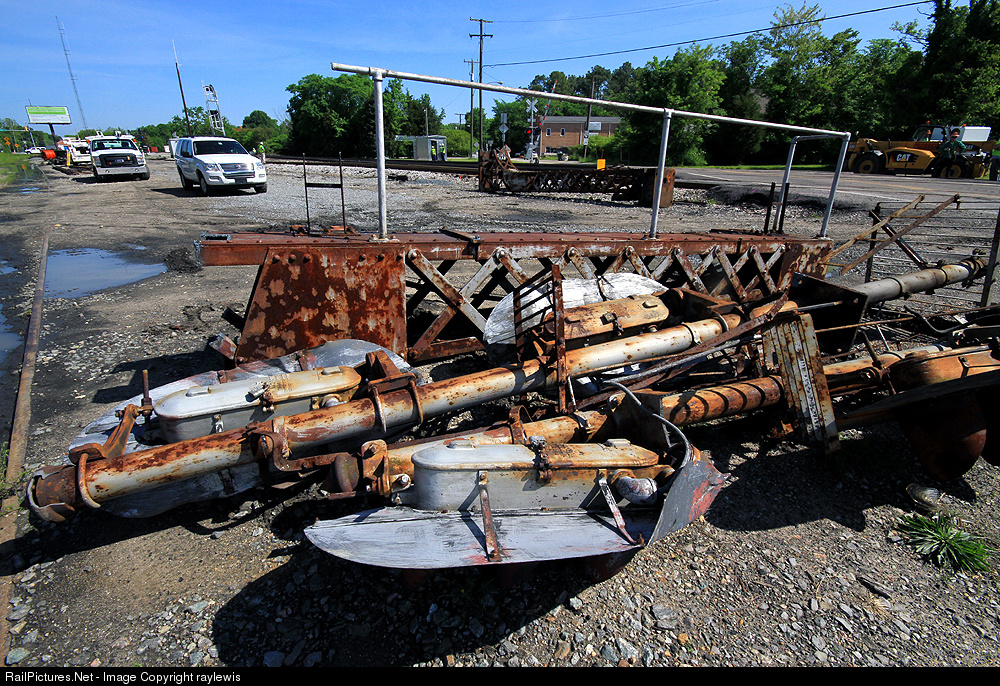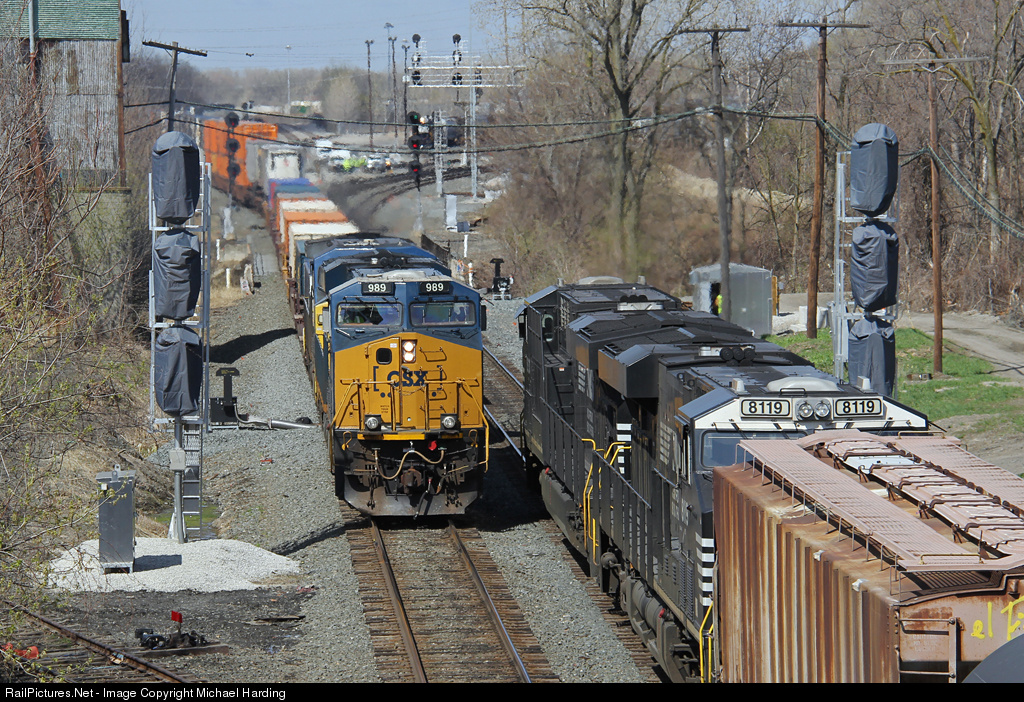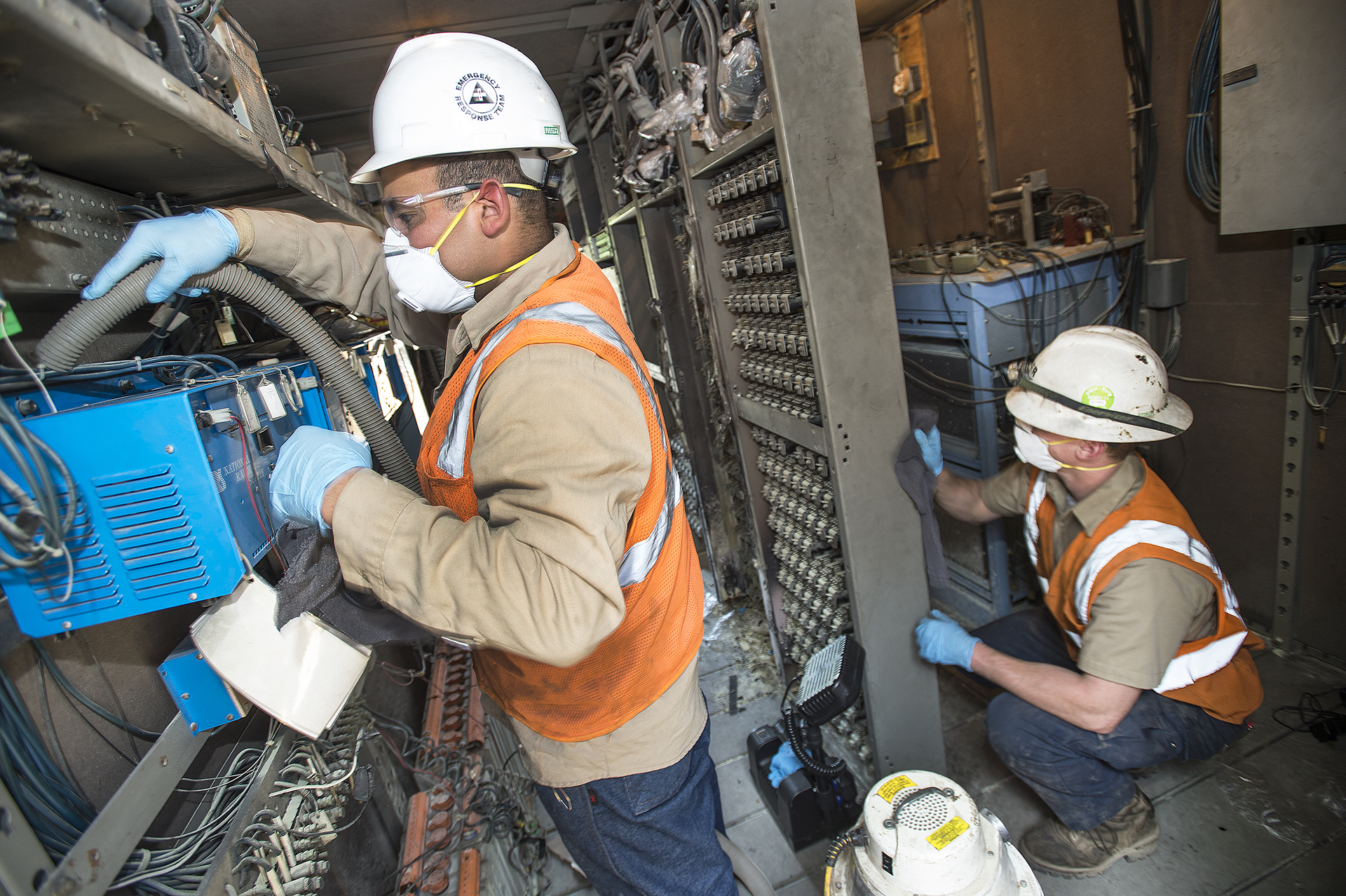Both towers' design also reflected an evolving trend in PRR interlocking tower design away from the trademark bay window types to the new "corridor" type tower that would appear in the 1940's. Still, the PRR spared little expense with brick construction, a slate roof and all the luxury amenities such as indoor plumbing and central heat.
Like THORN, COLA was an all relay interlocking plant wit a US&S CTC console interface (although as I explained before there was very little Rule 261 "CTC" involved in the project). One advantage of the PRR's foresight was that in the 1980's when the tower was ultimately closed the windows could simply be bricked up and a remote unit installed to replace the human operator flipping toggles on the unit lever machine. This means that COLA essentially was un-resignaled from 1938 through ~2011. Anyone who says that modern solid state ICs and printed circuit boards are more reliable let's see how many modern electronic devices are still functioning after 70 years in service and if replacement parts are still available.
From 1938 until its re-signaling in 2011 COLA used pneumatic switch machines with the compressor plant being located in the basement of the tower. The air reservoirs and dryer was located to the rear of the tower's exterior. Note the cables running into the tower from the CTC code line that ran from SHOCKS to CRESS.
It's status as a functioning relay room also meant that COLA tower had the privilege of wearing the Conrail blue reflective nameplates in addition to the high security brick job over almost every single exterior opening. I would not be surprised if the CTC console was active for local control right up until the end. Also note the tower's door and slate shingled canopy. Classy.
Thanks to the internet I managed to track down an a photo of the COLA operator sitting at the CTC console around 1980. If you visited the THORN page you can see that everything is essentially the same, only this console is a little larger. Note the HBD-DED readouts in the background. For those of you who like their facts and figures COLA had a 150 unit lever CTC console broken out into the following categories.
- 23 levers for 53 signals
- 27 levers for 40 switches
- 4 levers for 6 electric locks
- 1 traffic lever
- 2 levers for overhead wire sectionalizin
I am not 100% sure what the exact function of this supplementary relay room was, but it matches a similar one at LAKE as well as a number of structures on the Buffalo Line. My guess is that it is the location of the CTC code line equipment that was possibly turned into a maintainers workshop.

